Review: 2012 Hyundai Accent SE
So, what’s your checklist? If you read this site regularly, you have one: the characteristics of your ideal next car. Perhaps more than one, if you have the need or desire for more than one type of car. One of my checklists concerns my ideal compact hatch. The latest contestant: the 2012 Hyundai Accent SE.
- Tasteful, subtly sporty exterior, with tight proportions and no extraneous details
The Mazda Protege5 that’s occupied my garage for the past eight years nailed this one. The Mazda3 that replaced it on dealer lots, not even close. The Accent SE doesn’t hook me like the P5 did, but it’s more attractive than the related sedan and, among the current small hatches, edges out the similarly-styled Ford Fiesta for the top spot thanks to crisper lines and a less swoopy, windowlette-free A-pillar. (The car does look better in person than in these photos.) Additional points to Hyundai for not overdoing the front end and designing the car to look its best without monster rims (the SE wears 16s). The exterior styling is far from stodgy, but it also works for those of us well out of our teens.
- The same inside the car, with solid construction and good ergonomics
I don’t want to drive an appliance, but I don’t want to inhabit a video game or science fiction fantasy, either. Looking at some key design element, I don’t want to constantly wonder, “What were they thinking?” This rules out the Civic, Mazda3, and MINI, among others. The Accent isn’t far off my ideal, but falls short thanks to the lingering econo-car mindset evident in the silver-painted trim on the doors and the thin, light gray (why?) fabric on the seats. Ford does much better with these bits, while also offering more solidly bolstered buckets. On the other hand, the Accent’s instrument panel is a keeper. The plastic is all the hard stuff, but it feels solid and doesn’t appear cheap. Unlike in a Fiesta or Focus, the center stack controls are easy to reach, understand, and operate.
- A driving position that encourages an intimate connection with the car
It’s easier to describe what my ideal driving position does not include: a distant windshield, thick pillars, or small, high-mounted windows. The Accent much better than the current norm on the first and okay on the other two (though the rear window is very small). You’ll find an airier cabin in a Mazda2, but other competitors tend to rank below the Hyundai. One minor negative: unlike in the Fiesta and new Chevrolet Sonic the steering wheel does not telescope.
- Adequate space for three pre-teen kids and a run to CostCo
The Accent’s rear seat and cargo area are no match for those of the Honda Fit and Nissan Versa, or any C-segment hatch, but are roomier than in the Fiesta. Good enough, The rear seat cushion is mounted a little too low for adult comfort, but I’d rarely have adults back there.
- A refined, willing, sweet-sounding engine
Hyundai’s new, direct-injected 1.6-liter four-cylinder engine twists out a segment-leading 138 horsepower at 6,300 rpm. There’s noticeably more oomph than with the 120-horsepower mill in the Fiesta, much less the asthmatic 100-horsepower lump in the Mazda2. But even when saddled with a reasonably light 2,400-pound curb weight we’re still talking about the difference between very slow, sorta slow, and a touch more than adequate. With a torque peak of 123 pound-feet at 4,850 rpm, you’ll have to rev the 1.6 in all but the most casual driving. Which is okay, as Hyundai’s latest four revs smoothly and quietly. If anything, I’d like to hear more of the right sort of noise over 4,000 rpm.
- A tight, slick, solid shifter
Unfortunately, exercising the four requires contact with the manual shifter, which avoids a failing grade thanks only to moderate throws and the ease of grabbing the desired gear. The shifter feels clunky and crunchy. It even sounds clunky and crunchy. Logitech makes better-feeling shifters—for your computer. Every car company has been engineering manual shifters since the day it was born. Tech doesn’t get any older. So why does getting the shifter right remain so hard for so many of them? Hyundai has employed a pretty good B&M unit in the Elantra Touring and the previous-generation Accent. Do the same with the new one.
On top of this, no points are awarded for fitting a six-speed transmission, even though most competitors make do with five-speeds. Here’s why:
AB1st4.403.772nd2.732.053rd1.831.294th1.391.045th1.000.896th0.770.77See the nicely-spaced ratios in column A? You get them with the Accent’s six-speed slushbox. Column B is the manual. The top three gear ratios are so close together that fifth is pointless. Meanwhile, the first three gears are too far apart. Rev to the 6,300 rpm power peak in first, shift to second, and revs fall all the way to 3,400 rpm, well short of the torque peak. If this weren’t bad enough, the engine bogs momentarily following such aggressive shifts, especially if the finesse-free traction control detects a whiff of wheel slip. (There’s a solution for this last issue: turn the system off.) The power hole isn’t as deep or as broad as in the Mazda2, but only because you’ve got more engine to work with.
- Good fuel economy
Working from home, I don’t drive much, so a small car’s fuel economy doesn’t have to clear a high bar. Anything over 29 will do, though bigger numbers earn bonus points. Hyundai worked much harder to earn these bonus points than on shift feel, with EPA ratings of 30 city and 40 highway. In suburban driving the Accent’s trip computer reported numbers as high as 48, but more typically about 37, and as low as 30 with a heavier foot and more frequent stops.
One oddity not limited to Hyundai: all of the latest B-segment cars earn similar EPA numbers to their C-segment sibs despite lower curb weights and smaller engines. What’s the deal with this? If the Hyundai Elantra can manage 29/40, then why can’t the Accent achieve 32/44? Just curious personally, though other buyers less interested in handling will find the Bs pointless.
- Communicative steering and agile handling
For me, the primary strength of a B-segment car should be agile handling. If I wanted to feel like I was driving a big car, I’d buy a big car. (Okay, I did buy a big car, but not because I liked how it handled.)
The new Accent lacks the frisky chassis and quick, sharp, communicative steering of the Mazda2, but handles and steers better than other direct competitors with the partial exception of the Ford Fiesta. The Ford has a more solid, German-as-opposed-to-Asian feel, but softer suspension tuning. Both chassis are well-behaved, especially when hurried. Either car steers and handles better, and is much more fun to drive, than the soggy, bland appliances from Nissan and Toyota (2011 anyway; I haven’t yet driven the 2012 Yaris). The Honda Fit? While others sing its praises, I can’t get past the microvan driving position (see
- A livable ride
I used to think I wanted a bare bones car. Then I drove a Lotus Elise. Immediately afterwards the Protege5 seemed as quiet and cushy as a Lincoln Navigator. But compared to just about anything else the Mazda is rough and noisy. Though I’m not seeking a cocoon, I’d prefer a car that didn’t beat me up or assault my eardrums. The Accent does well here, bettering the larger but bouncier Elantra and nearly matching the segment-best Fiesta.
- Good value
My wife thinks I’m cheap. But value is really my thing. I’m looking for the sweet spot in the amount of car delivered for the dollar. In contrast, B-segment buyers have traditionally been downright cheap. Seeking their nickles, the Hyundai Accent vied with the Nissan Versa for the title of America’s cheapest car.
The $9,990 special is gone, and then some, with the Accent’s redesign. The base sedan lists for $13,205, the base hatchback (now with four doors rather than two) for $13,455. And an SE like you see here? $16,555. Even with this, its most affordable model, Hyundai is now about value, not the lowest possible price.
Does the Accent deliver this value? The closest non-Korean competitor, the Ford Fiesta SE with SYNC and Sound and Sport Appearance Packages, lists for $16,990. Running both through TrueDelta’s car price comparison tool finds that the two are very closely matched in features, with a mere $15 adjustment in the Ford’s favor. So this decision is going to come down to something other than price. In the Ford’s favor we have a sportier, better-trimmed interior, a decent shifter, and a generally more upscale feel. But the Hyundai counters with a stronger engine, larger wheels (16s vs. 15s), tighter suspension tuning, and a more viable back seat. It’s a tough call that’ll come down to priorities until Hyundai fixes the shifter and interior trim (or the aftermarket does what it does best).
A Mazda2 Touring is also very close in price, listing for $125 less but ending up about $500 more after the feature-based adjustment. The Mazda is easily the best handler of the three, but is saddled with gearing that makes a weak engine feel even weaker and a more econo-car look and feel.
The problem with any of these small hatches: C-segment cars offer more power and nicer, roomier interiors with similar handling and fuel economy. A Ford Focus SE with Convenience and Sport Packages lists for $20,930. About $900 of the difference pays for additional features. The rest simply pays for more car. If you have the extra scratch, spend it. Don’t have it? See the previous paragraph.
Maybe in 2014?
The new Hyundai Accent SE is a good car that’s painfully close to being a great one. The stuff that can’t be changed easily or cheaply is all here: tastefully attractive styling, good driving position, refined, relatively powerful engine, competent chassis. The interior trim and shifter need work, and the steering and transmission would also benefit from additional development. As-is, it seems that a light gray interior aficionado was working off a spec sheet without really understanding or caring about the goal of a driver-oriented car. The days when “GT” meant standard leather inside your Elantra aren’t quite past us. Someone who truly loves driving small hatches needs to tweak this one to look and feel more overtly sporty, communicative, and engaging (without going over the top). In Hyundai parlance, the Accent hatch needs and deserves the R-Spec treatment. Hyundai has proven itself willing and able to make improvements as quickly as the second model year. They can start here.
Hyundai provided the vehicle, insurance and one tank of gas for this review.
Michael Karesh operates TrueDelta, an online source of automotive pricing and reliability data.
Michael Karesh lives in West Bloomfield, Michigan, with his wife and three children. In 2003 he received a Ph.D. from the University of Chicago. While in Chicago he worked at the National Opinion Research Center, a leader in the field of survey research. For his doctoral thesis, he spent a year-and-a-half inside an automaker studying how and how well it understood consumers when developing new products. While pursuing the degree he taught consumer behavior and product development at Oakland University. Since 1999, he has contributed auto reviews to Epinions, where he is currently one of two people in charge of the autos section. Since earning the degree he has continued to care for his children (school, gymnastics, tae-kwan-do...) and write reviews for Epinions and, more recently, The Truth About Cars while developing TrueDelta, a vehicle reliability and price comparison site.
More by Michael Karesh
Latest Car Reviews
Read moreLatest Product Reviews
Read moreRecent Comments
- Kwik_Shift_Pro4X The more taxpayer dollars wasted, the closer it will be to having all your assets taken from you.
- Jkross22 Just give this money to the pentagon. They're great at lighting someone else's money ablaze and then failing audits. 6 years running they can't tell you how money was spent. I think they're going for a baker's dozen, at which point the pretense will be dropped and they won't even be audited.
- Ollicat none of it.
- Kwik_Shift_Pro4X No tech should be mandated. IMHO, automatic braking would be more hazardous than defensive driving would ever be.
- Buickman Ironiq?




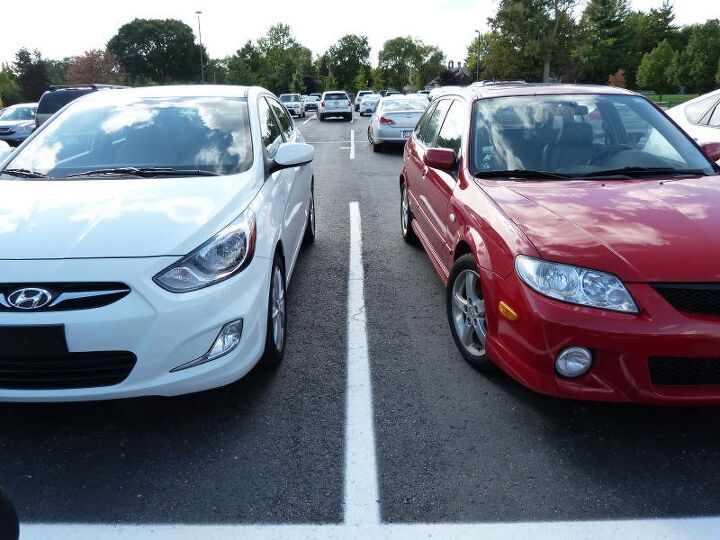

























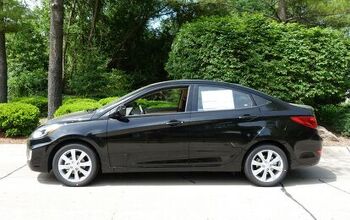

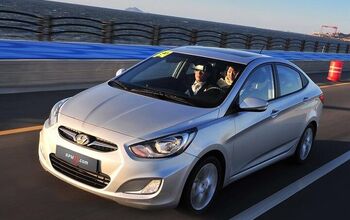
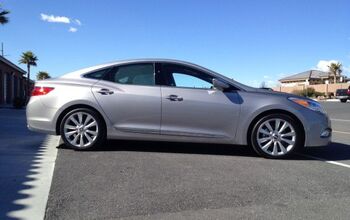
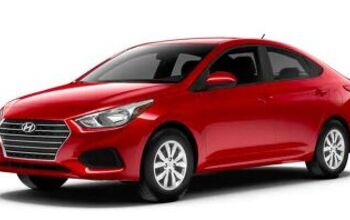










Comments
Join the conversation
Fantastic review. I was looking forward to this one, and you didn't disappoint. The Accent is one of the cars I'm considering for my next purchase (though not for a few years), and your review does a great job of highlighting the potential pitfalls. For me, the tiny rear window and the cheap seat fabrics are the primary turn-offs--not deal-breakers, but still disappointing. I'm very interested now to read TTAC's take on the Kia Rio 5-door, particularly how it stacks up against the Accent.
I guess I'm one who doesn't praise the P5 as the engine was just anemic and did nothing special. I drove one brand new and it made my wife and I sick to our stomachs in a matter of minutes. We loved our Mazda6's though and weren't thrilled with my 04 Mazda3S 5 speed. Having said that, we recently test drove both the Accent sedan in GLS guise and the Accent SE, both with automatic transmissions as that's all my wife will drive. I'm surprised you even found a manual transmission. Most folks under 30 have no idea how to drive one! I was pretty impressed with the Accent. Great interior design and quality and impressive power for it's size. I will say the 6 speed auto seems to fall off after gear changes and required me to apply throttle after it changed gears to keep the same rate of acceleration. Just another reason I hate automatics. We plan to drive the Fit Sport automatic, but I think the difference in the price and supposedly better fuel mileage will make us lean towards the Accent. We also drove the Elantra in GLS trim and liked it, it definitely had better acceleration, so I don't buy the EPA MPG estimates. The best driving car for me was the new Focus SE sport package with a manual. Loved it, but it was $19500. The Accent sedan was $17,300, the hatch SE was $17700.